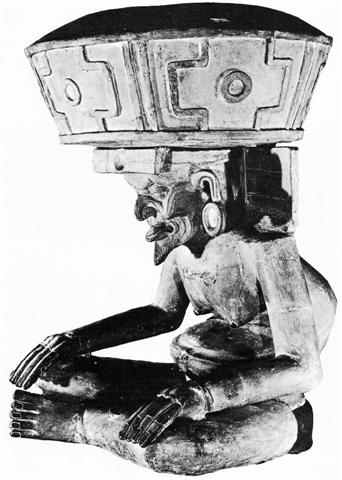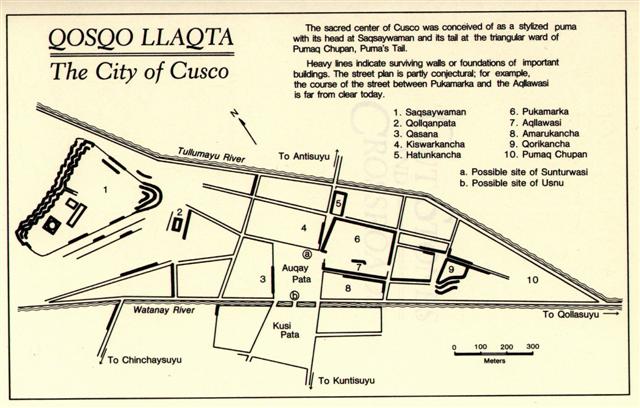273. There are 229 glyphs on side a of the G tablet and from there to glyph 365 there are 136 right ascension days, i.e. equal to the distance from January 1 to Alcyone in May 16 (136). And 136 was also the position of Talitha Austalis, κ Ursae Majoris: kaph is thought to have been derived from a pictogram of a hand; in both modern Arabic and modern Hebrew kaph means palm/grip, viz. at the uplifted right 'hand' of the Great Bear - if counted from 0h. Possibly this 'uplifted hand' referred to how Itzam-Yeh (Ursa Major) once upon a time had been uplifted by a whirlwind of the precession to alight in the top of the Cosmic Tree (becoming the Sky).
... Savage tribes knew the Pleiades familiarly, as well as did the people of ancient and modern civilization; and Ellis wrote of the natives of the Society and Tonga Islands, who called these stars Matarii, the Little Eyes: The two seasons of the year were divided by the Pleiades; the first, Matarii i nia, the Pleiades Above, commenced when, in the evening, those stars appeared on the horizon, and continued while, after sunset, they were above. The other season, Matarii i raro, the Pleiades Below, began when, at sunset, they ceased to be visible, and continued till, in the evening, they appeared again above the horizon. Gill gives a similar story from the Hervey group, where the Little Eyes are Matariki, and at one time but a single star, so bright that their god Tane in envy got hold of Aumea, our Aldebaran, and, accompanied by Mere, our Sirius, chased the offender, who took refuge in a stream. Mere, however, drained off the water, and Tane hurled Aumea at the fugitive, breaking him into the six pieces that we now see, whence the native name for the fragments, Tauono, the Six, quoted by Flammarion as Tau, both titles singularly like the Latin Taurus. They were the favorite one of the various avelas, or guides at sea in night voyages from one island to another; and, as opening the year, objects of worship down to 1857, when Christianity prevailed throughout these islands ... But - we can see from the diagram below - the central circle defining the path of the northern pole through the ages never allowed Ursa Major inside its border. In a sense, therefore, Itzam-Yeh had to be a False Sun.
... a great bird who is trying to land in a huge ceiba tree heavy with fruit. This mythical bird is Itzam-Yeh, Classic prototype of Wuqub-Kaqix, 'Seven-Macaw', of Popol Vuh fame. In that story, in the time before the sky was lifted up to make room for the light, the vainglorious Seven-Macaw imagined himself to be the sun. Offended by his pride, the Hero Twins humbled him by breaking his beautiful shining tooth with a pellet from their blowgun ...
It strikes me that in order to disable Itzam-Yeh - who had been swept up by the Whirlwind to the vicinity of the northern pole - the proper way to take this bird down again should be to blow at him.
And his beautiful shining tooth could have referred to Thuban (α Draconis) not far above our own view of Ursa Major, and if so then the Mayan myth seems to tell about when Thuban was succeeded as north pole star by Kochab (β Ursae Minoris) - which at the time of rongorongo was located 225 days after 0h. However, when the Sun was at the pair of Talitha ('jumping') stars in early August then the Full Moon was (ideally) at the South Pole, at Dramasa, and from Thuban (*212) to Dramasa (*320) there were *108 right ascension days. Could the beautiful shining tooth of Itzam-Yeh have fallen all the way from the north pole to the south pole? "... Ulug Beigh has it [ι Ursae Majoris] as Al Phikra al Thalitha, perhaps for Al Kafzah al-thālithah, the third spring, or leap, of the ghazal; but he was not sufficiently comprehensive, for this last title was applied by the Arabs to ι and κ together; al Ūla, the First (leap), being shown by ν and ξ, and al Thānīyah, the Second (leap) by λ and μ, ..." (Allen)
... The Hindu goddess of well-being and wealth, Lakshmi, is often shown holding a coconut. In the foothills of the temple town of Palani, before going to worship Murugan for the Ganesha, coconuts are broken at a place marked for the purpose. Every day, thousands of coconuts are broken, and some devotees break even 108 coconuts at a time as per the prayer. In tantric practices, coconuts are sometimes used as substitutes for human skulls. In Hindu wedding ceremonies, a coconut is placed over the opening of a pot, representing a womb ...
... The correspondence between the winter solstice and the kali'i rite of the Makahiki is arrived at as follows: ideally, the second ceremony of 'breaking the coconut', when the priests assemble at the temple to spot the rising of the Pleiades, coincides with the full moon (Hua tapu) of the twelfth lunar month (Welehu). In the latter eighteenth century, the Pleiades appear at sunset on 18 November. Ten days later (28 November), the Lono effigy sets off on its circuit, which lasts twenty-three days, thus bringing the god back for the climactic battle with the king on 21 December, the solstice (= Hawaiian 16 Makali'i). The correspondence is 'ideal' and only rarely achieved, since it depends on the coincidence of the full moon and the crepuscular rising of the Pleiades ... ... He turned round and round to the right as he fell from the sky back to the water. Still in his cradle, he floated on the sea. Then he bumped against something solid. 'Your illustrious grandfather asks you in', said a voice. The Raven saw nothing. He heard the same voice again, and then again, but still he saw nothing but water. Then he peered through the hole in his marten-skin blanket. Beside him was a grebe. 'Your illustrious grandfather asks you in', said the grebe and dived. Level with the waves beside him, the Raven discovered the top of a housepole made of stone. He untied himself from his cradle and climbed down the pole to the lowermost figure. Hala qaattsi ttakkin-gha, a voice said: 'Come inside, my grandson.' Behind the fire, at the rear of the house, was an old man white as a gull. 'I have something to lend you', said the old man. 'I have something to tell you as well. Dii hau dang iiji: I am you.' Slender bluegreen things with wings were moving between the screens at the back of the house. Waa'asing dang iiji, said the old man again: 'That also is you.' ...
South of the equator (on Easter Island) the night corresponding to Christmas Eve (not Day) could have been regarded as that night - eve(ning) - when in August 4 (216 = 8 * 27 = 2 * 108) the Full Moon was at Talitha Australis - because the ancient nightside map in their minds would have indicated how at the time of Bharani (the day before Kochab) this was at "December 24. And at the time of the Bull this place would have been DECEMBER 1 (*255 = *355 - *100). ... In Hawaii, the rising of the Pleiades was the signal for the beginning of the Makahiki major harvest festival which centered upon Lono (Rongo). For Rapa Nui, as for the Maori, the Mangarevans and the rest of the people of the Southern Hemisphere, the rising of the Pleiades is almost simultaneous with the Austral June solstice. The Rapa Nui calendar begins with the month of Anakena (the name of the landing site of Hotu Matu'a). Anakena was said by Thomson to mean August, but Métraux corrected that to July. Taking into consideration the conflicting evidence of the timing of Orongo ceremonies and based upon consultation with noted Pacific astronomer Will Kyselka, I think it is probable that the Rapa Nui ritual calendar, as that of the Maori, Mangarevans, Samoans, Tongans and other Polynesians began in July following the rising of the Pleiades. On Rapa Nui and many other islands, the Pleiades were called Matariki... I think both Thomson and Métraux were right. At the beginning of August there seems to have been 3 days 'with cold food' (corresponding to the southern winter solstice at the time of Bharani), and according to the Julian calendar (which had recalibrated the positions of the Sun in relation to the stars) the corresponding 3 days were when the Sun was in early January and the Full Moon in early July. ... In China, every year about the beginning of April, certain officials called Sz'hüen used of old to go about the country armed with wooden clappers. Their business was to summon the people and command them to put out every fire. This was the beginning of the season called Han-shih-tsieh, or 'eating of cold food'. For three days all household fires remained extinct as a preparation for the solemn renewal of the fire, which took place on the fifth or sixth day after the winter solstice [Sic!]. The Chinese renewal of fire came on the 5th or 6th day after the solstice, and Dramasa (α Octantis, 88° 57′ S) was positioned in August 5 (*320 - *183) at Ga3-14 (→ π). As easily as the Chinese evidently could 'change gears' from one time perspective to another so it seems this was common human knowledge anciently when all knew about the precession and they were rehearsing significant parts of the grand old story every starlit evening after their campfires had turned to ashes: ... Space and time are a single, related concept in Runasimi [the language of the Inca people], represented by one word, pacha, which can also mean 'world' and 'universe'. The image of time familiar to Waman Puma was static and spatial: one could travel in time as one travels over earth - the structure, the geography, remaining unchanged. To him it does not matter that he shows Inka Wayna Qhapaq, who died in 1525, talking to Spaniards who did not arrive until 1532. Wayna Qhapaq was the last Inca to rule an undivided empire: he is therefore the archetype, and it must be he who asks the Spaniards. 'Do you eat gold?' In Andean thought both world and time were divided into four sectors or directions unified under a presiding fifth principle. The Tawantinsuyu - 'the indivisible four quarters' - was unified and presided over by Cusco, the center.
Similarly, history was divided into four previous ages, presided over by a fifth, the present. In his book, Waman Puma organizes the history of both Old and New worlds according to this scheme. The Old Testament and the pre-Inca times are each divided into four equivalent and parallel ages. The 'present' age in Peru begins with the appearance of Manku Qhapaq, the first Inca, a being of supernatural origin. And in the Old World the 'present' starts with the birth of Jesus Christ ...
... The verdicts concerning the familiarity of ancient Near Eastern astronomers with the Precession depend, indeed, on arbitrary factors; namely, on the different scholarly opinions about the difficulty of the task. Ernst Dittrich, for instance, remarked that one should not expect much astronomical knowledge from Mesopotamia around 2000 B.C. 'Probably they knew only superficially the geometry of the motions of sun and moon. Thus, if we examine the simple, easily observable motions by means of which one could work out chronological determinants with very little mathematical knowledge, we find only the Precession.' There was also a learned Italian Church dignitary, Domenico Testa, who snatched at this curious argument to prove that the world had been created ex nihilo, as described in the first book of Moses, an event that supposedly happened around 4000 B.C. If the Egyptians had had a background of many millennia to reckon with, who, he asked, could have been unaware of the Precession? 'The very sweepers of their observatories would have known.' ... ... When it was evident that the years lay ready to burst into life, everyone took hold of them, so that once more would start forth - once again - another (period of) fifty-two years. Then (the two cycles) might proceed to reach one hundred and four [104] years. It was called One Age when twice they had made the round, when twice the times of binding the years had come together. Behold what was done when the years were bound - when was reached the time when they were to draw the new fire, when now its count was accomplished. First they put out fires everywhere in the country round. And the statues, hewn in either wood or stone, kept in each man's home and regarded as gods, were all cast into the water. Also (were) these (cast away) - the pestles and the (three) hearth stones (upon which the cooking pots rested); and everywhere there was much sweeping - there was sweeping very clear. Rubbish was thrown out; none lay in any of the houses ...
|
||||||||||||||||||||||||||||||||||||||||||||||||||||||||||||||||||||||||||||||||||||||||||||||||||||||||||||||||||||||||||||||||||||||






.jpg)






